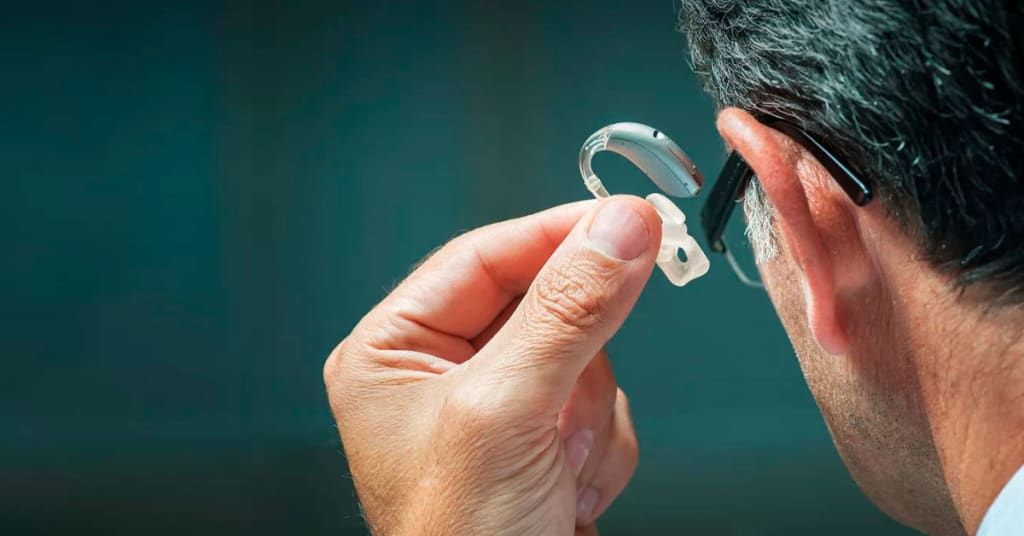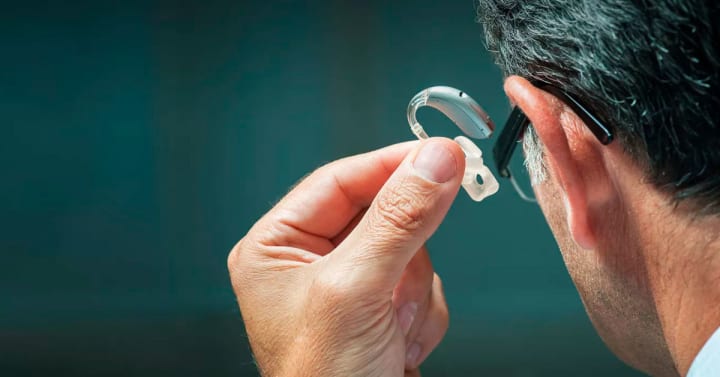Hearing aids for tinnitus: How they work and what to look for
hearing aids for tinnitus

Tinnitus is a condition in which individuals perceive sounds that have no external source. These sounds can take the form of ringing, buzzing, or hissing, and they can range from a mild annoyance to a debilitating condition that significantly impacts an individual's quality of life. While there is no known cure for tinnitus, there are several management strategies available, including the use of hearing aids.
Hearing aids can be useful in managing tinnitus by amplifying external sounds and providing a distraction from the perceived internal sounds of tinnitus. They can also help improve hearing, which can reduce the strain on the auditory system, leading to a reduction in tinnitus symptoms.
In this comprehensive guide, we will explore how hearing aids work for tinnitus and what to look for when selecting a hearing aid for tinnitus management.
How do hearing aids work for tinnitus?
Hearing aids can be useful in managing tinnitus by amplifying external sounds and providing a distraction from the perceived internal sounds of tinnitus. They can also help improve hearing, which can reduce the strain on the auditory system, leading to a reduction in tinnitus symptoms.
Hearing aids for tinnitus typically come with special features designed to specifically address tinnitus symptoms. These features include:
White noise generators
White noise generators produce a constant low-level sound that can help mask the perceived sounds of tinnitus. The white noise can be adjusted to match the pitch and intensity of the individual's tinnitus, providing customized relief.
2. Sound therapy
Sound therapy involves the use of specific sounds, such as music or nature sounds, to reduce the impact of tinnitus on daily life. Hearing aids with sound therapy features provide a variety of sound options to help individuals find the most effective relief for their tinnitus.
3. Notch therapy
Notch therapy involves the use of specific sounds that are tailored to the individual's tinnitus frequency. These sounds are played at a slightly lower volume than the individual's tinnitus, causing the brain to rewire itself to ignore the tinnitus frequency. Notch therapy is a relatively new technique and is only available on select hearing aids.

Types of hearing aids for tinnitus
There are several types of hearing aids available for tinnitus management. The type of hearing aid selected will depend on the individual's specific needs and preferences.
Behind-the-ear (BTE) hearing aids
Behind-the-ear (BTE) hearing aids are the most common type of hearing aid available. They consist of a small device that sits behind the ear and a custom earpiece that fits inside the ear canal. BTE hearing aids can be useful in managing tinnitus by amplifying external sounds and providing a distraction from the perceived internal sounds of tinnitus.
2. In-the-ear (ITE) hearing aids
In-the-ear (ITE) hearing aids are custom-made to fit inside the ear canal. They are less visible than BTE hearing aids and can be useful in managing tinnitus by amplifying external sounds and providing a distraction from the perceived internal sounds of tinnitus.
3. Receiver-in-canal (RIC) hearing aids
Receiver-in-canal (RIC) hearing aids are similar to BTE hearing aids, but the speaker is placed inside the ear canal instead of behind the ear. RIC hearing aids can be useful in managing tinnitus by amplifying external sounds and providing a distraction from the perceived internal sounds of tinnitus
4. Completely-in-canal (CIC) hearing aids
Completely-in-canal (CIC) hearing aids are custom-made to fit deep inside the ear canal, making them virtually invisible. They can be useful in managing tinnitus by amplifying external sounds and providing a distraction from the perceived internal sounds of tinnitus.
5. In-the-canal (ITC) hearing aids
In-the-canal (ITC) hearing aids are custom-made to fit partially inside the ear canal, making them less visible than BTE hearing aids. They can be useful in managing tinnitus by amplifying external sounds and providing a distraction from the perceived internal sounds of tinnitus.
6. Bone-anchored hearing aids (BAHA)
Bone-anchored hearing aids (BAHA) are surgically implanted devices that use bone conduction to transmit sound to the inner ear. They can be useful in managing tinnitus caused by conductive hearing loss or single-sided deafness.
What to look for when selecting a hearing aid for tinnitus
When selecting a hearing aid for tinnitus management, there are several factors to consider:
Special features for tinnitus relief
Look for hearing aids that offer special features for tinnitus relief, such as white noise generators, sound therapy, and notch therapy.
2. Customization options
Choose a hearing aid that offers customization options for sound amplification and tinnitus relief. Customization options can include the ability to adjust volume levels, change sound frequencies, and adjust sound directionality.
3. Comfort and fit
Make sure the hearing aid is comfortable and fits well. A poorly fitting hearing aid can cause discomfort and may not effectively manage tinnitus.
4. Battery life
Consider the battery life of the hearing aid. Some hearing aids have rechargeable batteries, while others require disposable batteries. It's important to choose a hearing aid with a battery life that meets your needs.
5. Cost
Hearing aids can be expensive, and many insurance plans do not cover the cost. Consider the cost of the hearing aid and any ongoing maintenance expenses before making a purchase.
Conclusion
Hearing aids can be an effective management strategy for tinnitus. They can help amplify external sounds and provide a distraction from the perceived internal sounds of tinnitus. When selecting a hearing aid for tinnitus management, consider the special features for tinnitus relief, customization options, comfort and fit, battery life, and cost. Talk to your audiologist to determine the best hearing aid for your specific needs and preferences. With the right hearing aid and management strategies, tinnitus can be effectively managed, improving your overall quality of life.
Bonus tips for managing tinnitus with hearing aids
In addition to selecting the right hearing aid for tinnitus management, there are some additional strategies that can help maximize the benefits of hearing aids for tinnitus relief:
Use sound therapy
Many hearing aids offer special sound therapy features designed to provide relief from tinnitus. These features may include white noise generators, ocean wave sounds, or customized soundscapes. Experiment with different sound therapy options to find what works best for you.
2. Wear hearing aids consistently
To effectively manage tinnitus, it's important to wear hearing aids consistently. Even if you don't feel like you need them, wearing them consistently can help reduce the perceived internal sounds of tinnitus and prevent auditory deprivation.
3. Practice relaxation techniques
Stress and anxiety can exacerbate tinnitus symptoms. Practice relaxation techniques, such as deep breathing, meditation, or yoga, to reduce stress and promote relaxation.
4. Maintain healthy habits
Maintaining healthy habits, such as regular exercise, a balanced diet, and getting enough sleep, can also help manage tinnitus symptoms.
5. Seek support
Living with tinnitus can be challenging. Seek support from family, friends, or support groups to help cope with the emotional and psychological impact of tinnitus.
Final thoughts
Hearing aids can be a powerful tool in managing tinnitus. By amplifying external sounds and providing a distraction from the perceived internal sounds of tinnitus, hearing aids can help reduce the impact of tinnitus on your quality of life. When selecting a hearing aid for tinnitus management, consider the special features for tinnitus relief, customization options, comfort and fit, battery life, and cost. Work closely with your audiologist to find the right hearing aid for your specific needs and preferences. With the right hearing aid and management strategies, tinnitus can be effectively managed, improving your overall well-being and quality of life.
Say goodbye to tinnitus and hello to peace of mind! Try our 100% natural blend support today and start experiencing the relief you deserve. Don't let tinnitus control your life any longer - take action now and discover the power of nature."
Click Here to Try our 100% natural blend support today

Affiliate Disclosure:
There are links on this site that can be defined as affiliate links. This means that I may or may not receive a small commission. If you purchase something through links provided on this website.
About the Creator
Your GUIDE
Say goodbye to tinnitus and hello to peace of mind! Try our 100% natural blend support today and start experiencing the relief you deserve. Don't let tinnitus control your life any longer - take action now and discover the power of nature
Enjoyed the story? Support the Creator.
Subscribe for free to receive all their stories in your feed. You could also pledge your support or give them a one-off tip, letting them know you appreciate their work.






Comments
There are no comments for this story
Be the first to respond and start the conversation.